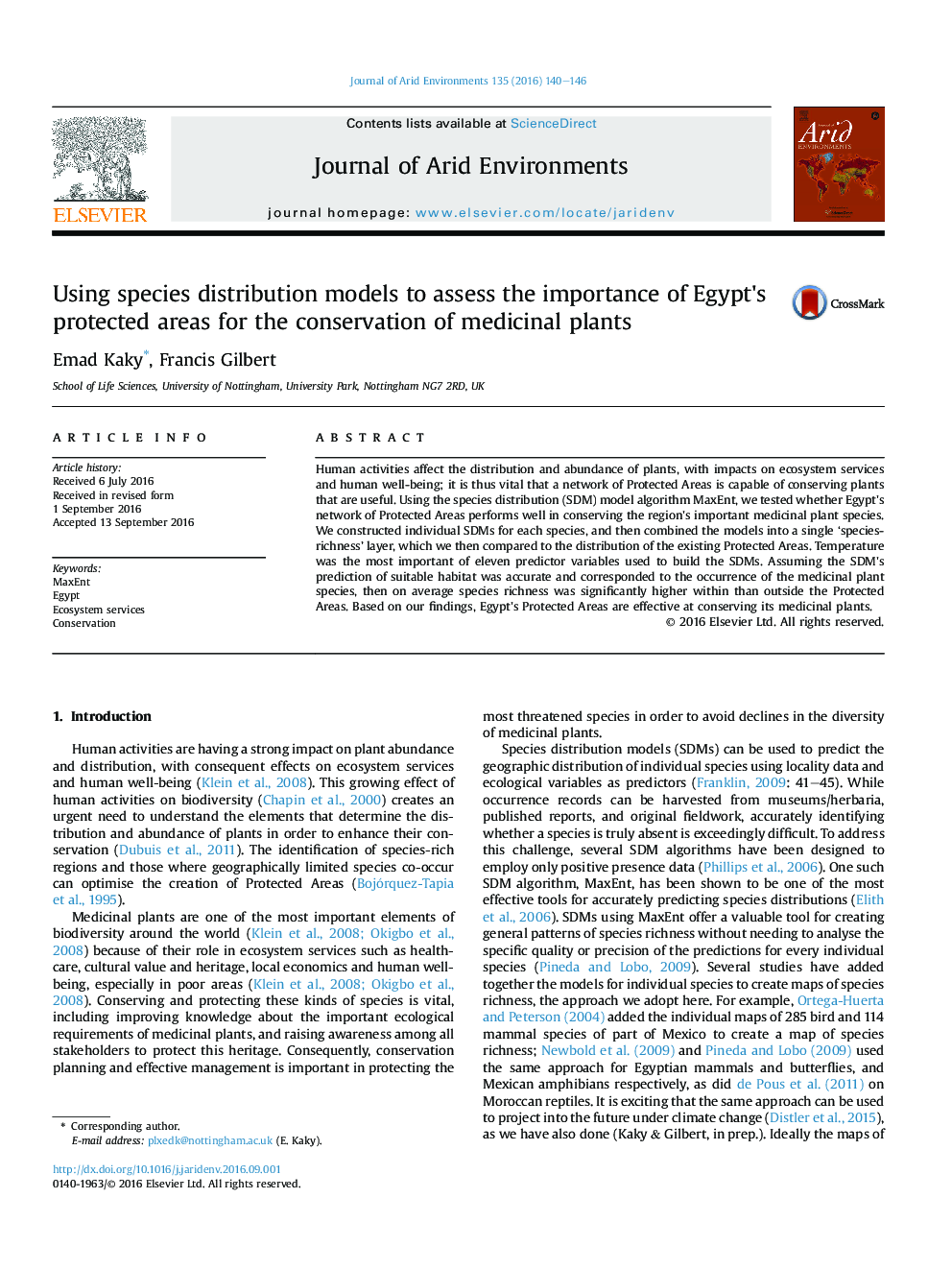| Article ID | Journal | Published Year | Pages | File Type |
|---|---|---|---|---|
| 4392681 | Journal of Arid Environments | 2016 | 7 Pages |
•Species distribution models were constructed for 114 medicinal plants of Egypt.•A predicted species richness map highlighted the hotspots of diversity within Egypt.•Predicted species richness within Protected Areas was higher than outside; the Protected Areas have been well located.
Human activities affect the distribution and abundance of plants, with impacts on ecosystem services and human well-being; it is thus vital that a network of Protected Areas is capable of conserving plants that are useful. Using the species distribution (SDM) model algorithm MaxEnt, we tested whether Egypt's network of Protected Areas performs well in conserving the region's important medicinal plant species. We constructed individual SDMs for each species, and then combined the models into a single ‘species-richness’ layer, which we then compared to the distribution of the existing Protected Areas. Temperature was the most important of eleven predictor variables used to build the SDMs. Assuming the SDM's prediction of suitable habitat was accurate and corresponded to the occurrence of the medicinal plant species, then on average species richness was significantly higher within than outside the Protected Areas. Based on our findings, Egypt's Protected Areas are effective at conserving its medicinal plants.
